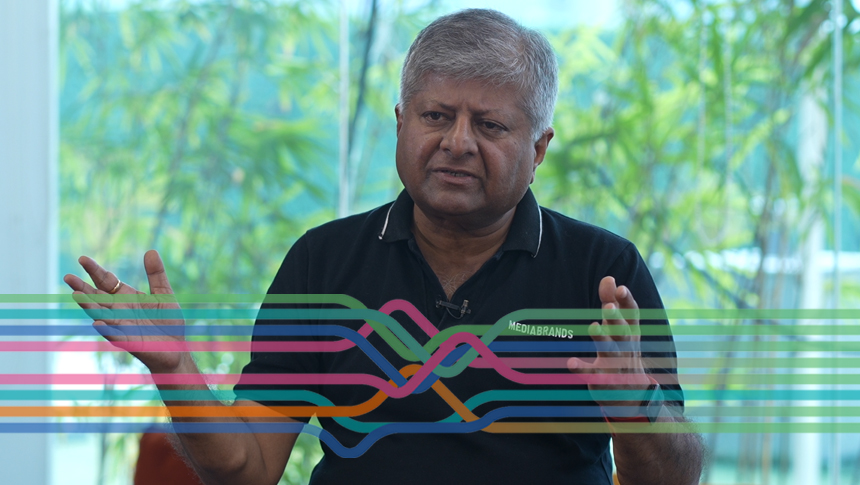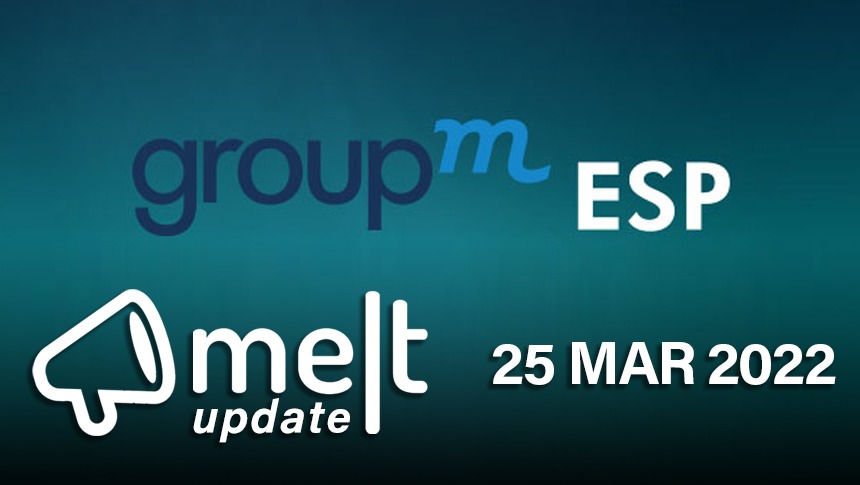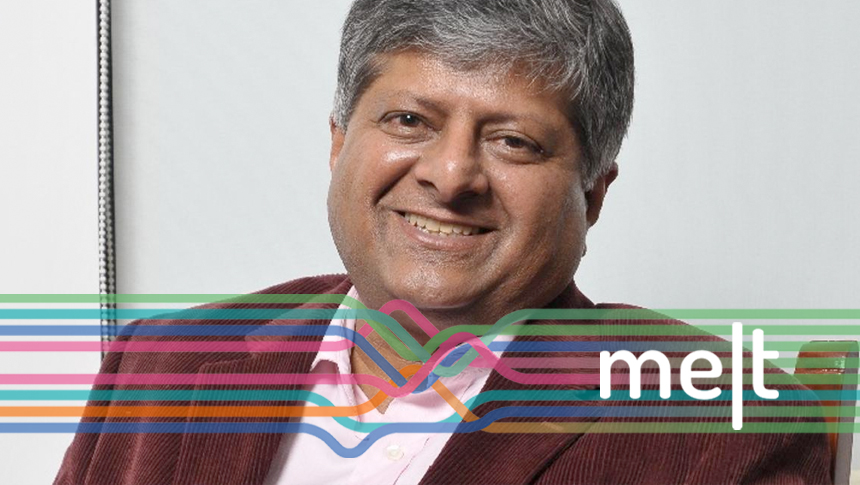Anant Rangaswami: To discuss the IRS 2017, the figures and the implications, we have Ashish Bhasin (Chairman, MRUC & Chairman & CEO, Dentsu Aegis Network South Asia), Shashi Sinha (Chairman, RSCI Managing Committee & CEO, IPG Media Brands), and NP Sathyamurthy (Chairman, RSCI Technical Committee & Executive Director, DDB Mudra Group). They will take us through the data, through the learnings, and through the implications of all these things. Ashish, a red-letter day in many ways because we’ve had measurement in some critical areas of Indian media after a gap of three years. So tell me the headlines before we get in to the discussion.
Ashish Bhasin: Yes, you’re absolutely right, Anant. I think first of all, the most important aspect of IRS 2017 is the fact that we are getting research in such an important medium, which wasn’t there for the last three or four years, and we were actually planning in the dark. It also has a record sample size of more than 3.2 lakhs, and probably merits getting into the Guinness Book Of World Records as the biggest research of this kind. There’s a much more deeper dive now into other media and a standardization, because today a consumer is exposed to different media, and we will now be reporting reach on a one-month level, be it Internet, television or print. There was a general perception that readership is falling, press is falling, however this survey shows that newspaper readership is up 40%, the total readership over last time’s research, and this includes magazine readership. That is up. There are almost 3.5 crore new magazine readers, and 11 crore new readers added for newspapers. There was also a better use of technology through Computer-assisted personal interviewing (CAPI) and various other bits so that the data was robust, and various other bits such as usage of flying squads and auditors, etc., to ensure that the data is robust and untampered as can possibly be. So this will be perhaps the most robust print research that India has ever seen.
AR: Shashi, one of the points made in the caveats listed for using the data is not to make apple to oranges comparisons, because IRS 2013 had very different elements. For example, the CAPI versus the iPad, the sample size is different, the security is different, etc. So you can’t truly make comparisons. However, all your comparisons are 2017 to 2014?
Shashi Sinha: Absolutely right. You see, this data is finally going to be used as currency for trading. So our whole point is that, you shouldn’t point out…
AR: And for planning, not just for trading.
SS: Yeah. So we’ve put in three to four measures. So the code of conduct that came in was… So, last time was only AIR. This time, in addition to AIR, there is three-day, seven-day, there’s total readership. So there are multiple measures.
AR: So why have we dropped average readership?
SS: It’s still there. So in addition to AIR, we’ve built in three-day, seven-day, and so on, because the nature of print consumption is changing. The other big difference is that we’ve segregated variants. So we’ve recommended not to compare the data because at a granular level, you can’t really compare for the reasons you mentioned, and the reasons i’ve mentioned.
AR: So how can…?
SS: See, it’s for a broad trend. We were just giving a broad trend. There seems to be a perception that print is not growing, which is wrong. We also realize that the 40% number could be higher, could be lower, because you can’t compare ideally. But the fact is that there is an indication, and this number gives a macro-level indication. Nowhere in our presentation, be it at the state level or the title level did we compare. It was only at a macro level that we’ve done so, to show to the audience because they didn’t have access to total readership last time, they don’t know what the number is, they don’t know what the multiplier is. So we did it to give some sense and understand the direction of the print medium.
AR: But is it justified headline? Print continues to grow. That’s what the headline is doing.
SS: Yeah, so 40% maybe 30%, maybe 70%, we don’t know. Because like you said, we can’t compare. But there is a direction coming.
AR: Today, if you look at it… Shall we say, if i were a lazy journalist, i would see that slide and say print is growing at 40%, and that’s the Economic Times headline tomorrow. By the way, I’ll take a punt on that! Is that the correct thing to do? Satya, is that something you should be doing? By putting out a number like this which you know is not correct? It’s a trendline. Is it responsible of you to put a number like that?
NP Sathyamurthy: So let me clarify. Data is used for broadly two purposes, this IRS Data. At the first level, it’s for multimedia planning for priority one, priority two and priority three markets. That’s what we did today. And as Shashi mentioned, the second part is trading. At the trading part, it is incorrect to compare given the changes we’ve made the study. From a macro perspective of planning and makret prioritization, and which markets are to be used, it’s absolutely right to use the current data in the current form. Otherwise, how do you show growth or decline in any thing?
AR: I’m asking why do you have to show?
SS: The question is Anant, we don’t know the numbers. But all indicators are showing the growth.
AR: What indicators are these?
SS: So if you see the number of new users coming on…
AR: From where?
SS: Anant, the point is macro indicators. We are being careful, not to go in to micro indicators. But macro indicators are there. Like i said, the numbers may not be accurate as the comparison may be odious. But there is a directional shift. As stakeholders of the body, we aren’t wearing the hats of agency owners, we are wearing the hats of MRUC, etc. So we’re saying that this is a broad indicator, and yes, it is a launch event, and there is an element of what you said. I see no harm in that. Yes, code of conduct talks about it, the granularity, and you can’t compare it for planning purpose.
AB: Also Anant, if tomorrow, to take your point, if the Economic Times headlines say that print is growing and more number of readers are being added, it would be absolutely accurate. That is what the research is showing. 11 crore readers have been added.
AR: Again, you’re saying 11 crore new readers.
AB: Additional readers.
AR: Additional, new, whatever. That is still in comparison. Why couldn’t you have given absolute numbers?
SS: Absolute numbers will be left bereft. By that logic, why do a press conference? Just release the numbers! We understand what we’re doing.
NPS: Just to give you one data point on why we believe it’s growing. We went to 100 people in 2012, 2014. The absolute number, raw account, of people we’ve picked up who’ve read print as a medium has grown by 60% over the last five years. The absolute numbers, forget about the projected numbers. Similarly, radio has gone up, internet has gone up, all that, right?
AR: Ashish, at a recent conference you’ve said that digital will be Rs 20,000 crore up, by 2020. Now, we’ve got growth in newspapers. Logically, if audience size grows, so should revenue. Finally, people buy audiences, not anything else. Am I right Shashi? Correct me if I’m wrong.
SS: Yeah.
AR: So we’ve got audience growth in digital, audience growth in TV, audience growth in print. So we’re seeing a Rs 85,000 crore advertising business by 2020!
AB: I don’t know if it will be Rs 85,000 crore. Our studies show that it will be Rs 77,000 crore by that time. And it is a fact that we are entering, I feel, a golden age for advertising in India, and for the next three to five years, we will see a 11 to 12% CAGR on a pretty large base now. Another point, since you picked up digital, another point in the presentation is that there are almost 4 crore people who are reading newspapers online and a number of around 50 lakh people…
AR: That’s once a month, you said. Once a month.
AB: Total readership. And there are almost 50 lakh people who are reading the newspapers only digitally. So the two trends actually complement each other perfectly. And if you’re asking if the advertising market is going to grow in India, I would say absolutely. It’s going to be the world’s fastest growing major ad market.
AR: Shashi, tell me. I was sitting in the audience, you were sitting in the front row. There was a great sense of expectation, and everybody wanted to see only the last two slides. I don’t think anybody wanted to see the rest of it, the methodology, and so on. Is that a danger? That people get consumed by those two slides, and don’t bother about the rest? You know, where Nielsen spoke about what they’ve done, their estimates, etc. Is there a danger that people don’t care what MRUC has done, what RAC has done, and only bother about what they see in the slides?
SS: So that’s the reality of life. So if i’m a published, and my life depends on my numbers… See, what we’ve presented today is very macro. People aren’t going to make out much from these figures. These are broad trends. So we’ve said, “India’s largest newspaper”. But that doesn’t matter. That paper is in certain markets that is growing dramatically, some other markets it may not be growing. So when the software goes out in phases, and when they start seeing their numbers, that’s when they will start analyzing, they’ll see their ups and downs, and where they can improve.
AR: Or they’ll go to their lawyers. That’s the problem.
SS: Immature to predict anything. But I would say that our engagement has been very aggressive, and we’ve engaged all stakeholders, the industry. So if someone is disgruntled, we can’t predict that. But as far as we are concerned, the industry is far well engaged. That’s the sense I get over the last two to three months. So hope and pray that won’t happen.
AR: One of the other noticeable things is the absence of the advertiser in today’s meeting. Why is that advertisers are spending lesser time attending measurement meetings? It’s their money, eventually!
AB: I think you have pointed out a very right thing. I would urge all advertisers and tell them this. They’ve sort of outsourced this to agencies or media owners to some extent. Having said that, we’ve had very active participation at least at the board level, at the tech-comm level, both at the RSCI and the MRUC, but the participation can be improved. Remember, there is another part of this that we haven’t really covered today, and that’s product-linkage data. That product-linkage data is more of use to advertisers, not to agencies or publications to that extent. That’s where the advertiser’s interest will come from. To be fair, the fact also is that for the last three to four years, we haven’t had credible print research. So it’s not unfair to see if the research would come out, that was a question mark. Then they wait for the product-linkage data, and I’m hopeful that the engagement going forward will start increasing. But you’ve said it right. The industry needs a lot more client participation because ultimately, all research, is to sell the product.
AR: Satya, you brought out a point, and you were careful to underline that it’s your personal view. And you said it half as a joke. And that was that maybe, creatives should start looking at not just full page ads, but a higher frequency of smaller limit ads. One of the things that will help marketers make that decision is granularity of data. Suppose I knew how many people read Wednesday’s Hindustan Times, or Thursday’s Matrubhoomi, or whatever, that’ll help. But I don’t have that granularity of data in the new scheme of things. Do I have it?
SS: Sorry for interrupting, but there is a lot more granularity of data compared to before. Thank you for pointing it out. So thirty-days, seven-days, three-days, actually allows you better scheduling.
AB: And the points that you’ve made, is now available and even much more than that is available to subscribers.
NPS: So one is the depth of the information, the other is the width of the information. If I take print as an example, earlier, we captured only yesterday’s readership and total readership was never reported. Now we want the users to be empowered by all information that is available, as we explained, three-days, seven-days, and so on, in a month. There is time spent in reading, there is source of copy, portions read, frequency, etc. So there’s a lot more available for planners and buyers and publishers to read the data. And more importantly, all the data is now cross-tabulable with any other data being provided in the product linkage data. All that can be analyzed.
AR: Shashi, now I’m asking you to switch hats to your Lodestar UM / IPG Media Brands hats. A lot of your brands are users of glazed newsprint supplements. Now we don’t have a measure of supplement readership. Now, when you were asked, you said, “No”. On the one hand, you asked for suggestions. So why do you think it’s left out?
SS: It’s an issue of cost trade offs. All this finally, this is a sample survey of a scale of this size, not everything can be said on the record. But, we’re already working on the future on how to make the study more robust, more comprehensive. Ashish’s job as tech-comm head, is to get the right research going. Our job is to make it available to the industry, and ensure the money comes on. I mean, BARC would not be what it was if the broadcasters hadn’t put in the money. So if the outlay for the previous measurement system was X, now it’s probably 2X. The money was found. So I think somewhere, the first hurdle we were crossing is to release the research after a few years, for whatever reason. So we’ve done that. And now, in the next two months, we have to ensure acceptance in the industry. And after that, move on to the next time, which depends on the confidence of the industry in what we’ve released so that we can make it more robust and bigger.
NPS: So the media personality fit… One more research that’s being contemplated, which might be sometime soon if those goes well, is the media personality fit study, which looks at the many niche publications which don’t get represented in BARC or anywhere. The ones with less than 3.5% to 4% penetration. A niche channel, a business paper, etc. One separate study is being planned that includes these sections. It also includes the larger penetrated media, where supplements will become one of the media that’s explored in the study.
AR: Satya, staying with you. I could ask Nielsen this question, I’m asking you. If I’m right, Nielsen for BARC says that TV penetration is about 64%. For you, they say 61%. It’s the same Nielsen. I may be wrong here…
SS: So let me clarify this. I know the answer. As far as TV estimation is done, at BARC, it’s not done by Nielsen. Let me be clear. Nielsen does the groundwork. The research. If you look at the BARC system, it’s a layered structure. There is a third party involved, Magic9, and the BARC team. Estimation procedure is X and that procedure is used with some logic. These are all estimations. And here, MRUC and Nielsen has worked together. So there is some difference. However, the point you are making is valid. One of things we couldn’t pull out this time, and which we probably will, with the help of the entire ecosystem, is to move to one baseline. One common baseline for everything. But first, we must get the show on the road. If we’re successful with what we’re doing, then that’s the way to go.
AR: Ashish, you’ve flipped from your last pubic interaction to today. You were wearing a digital hat then, and a total media industry hat today. And there, digital gets measured almost minute by minute. This is getting measured now, after many years, but once a year. Do you think that’s a viable measurement solution for advertisers?
AB: So just to tell you, this is not that this is being reported after this thing. But the research is a continuous and ongoing, even for print. So far, we’ve been reporting it annually. As Satya was saying, maybe we should report it six-monthly, and maybe then, two quarterly. Remember that in print, the pace of change is not that rapid. If you’re a newspaper reader, it’s not that your habit will change completely within the next day. There is a pattern to it. Digital is something else. Digital is immediate impetus, and the pace of change is much faster. In fact, in digital, I feel that there is no agreed metric. So if there was an equal agreed metric… There is no third-party measurement. Every publisher in digital is giving their own measures. The need for the industry is for digital publishers to have one industry currency. And finally, all these currencies from different platforms should come together and talk to one another.
AR: Satya, what’s the industry’s reaction to this? And also, what would you wish for the reaction to be?
NPS: So I don’t wish any reaction. As tech-comm head, I wish for a good product and a job well done. I think, as is the case with any research, everybody wants their product to be number one or number two. Everybody wants a higher profile of readers. When you have a higher profile of readers, your numbers won’t be large. They will be small. That’s the irony of research. Many publishers will be happy with the outcome. There will be one or two publishers who won’t be all that happy with the outcome, but that’s part and parcel of any research.
AR: Shashi, we’ve seen it in TAM, we’ve seen it in BARC, where the measurement agency or body has asked users to be responsible with the use of data. And we’ve seen an abysmal failure on that front – not from the body, but from the users. So what can you do to make people adhere?
SS: The BARC example is a terrific example. So BARC has guidelines, there is a mechanism for display and usage of data in the community, and in my mind, in the context of the industry, because finally, it’s all for the industry, it’s working very well. We hope and pray that we can get to that level. We’ll be delighted.
AR: Thank you so much Ashish, Shashi and Satya. All the best to you and I hope it goes smoothly, without rancour, and if there are differences, I hope they are discussed and resolved.
PANEL: Thank you!



